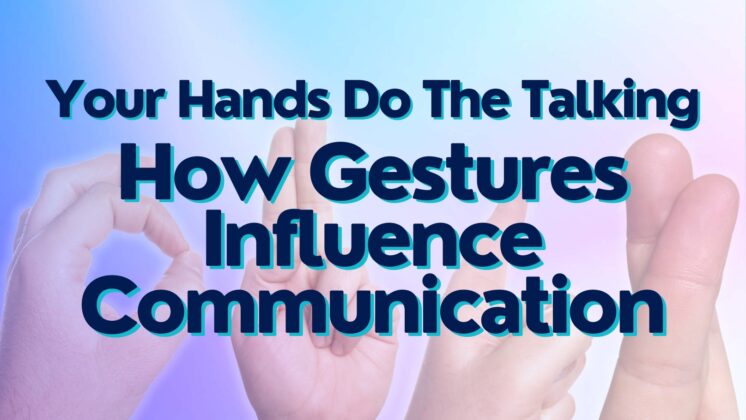Symbolic gestures or emblems are often used to facilitate social transactions and they can play a key role in human communication. Sometimes these can be without words and are often made with the hands. But gestures come from elsewhere too, such as shaking the head, which in many Western cultures means “no”, or raising the shoulders and rotating the hands outwards which can mean “I don’t know”.
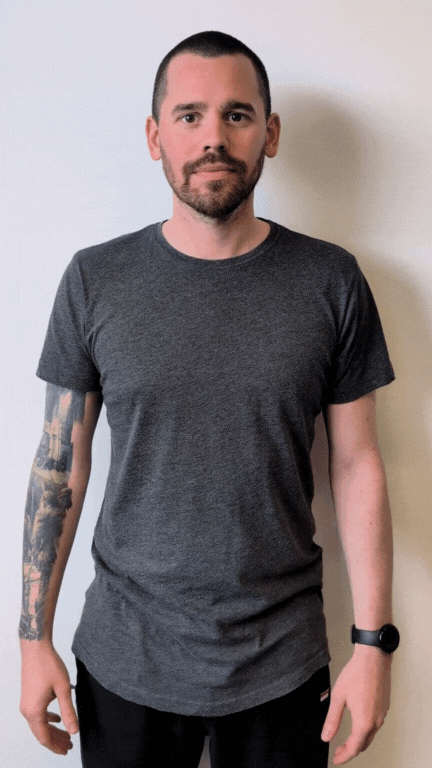
(Known to mean in many cultures ‘I have no idea’)
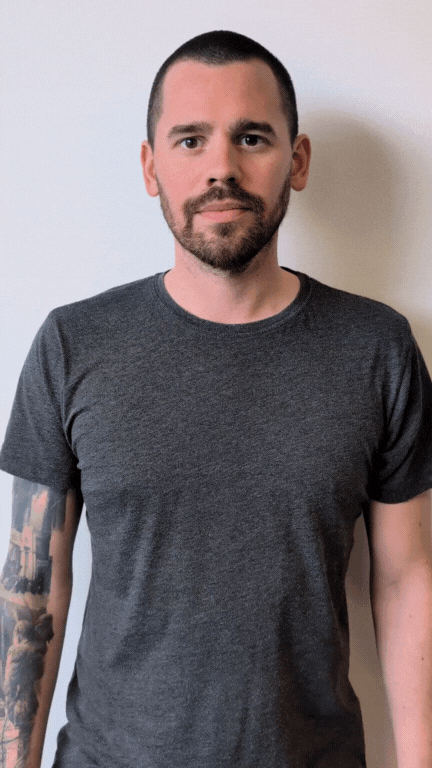
(Okay, or Arsehole? This has different meanings depending on culture and groups)
These and many other gestures can be used spontaneously to accompany words, such as ordering “five beers please” while showing the bartender four fingers and a thumb spread out with the palm facing them or facing you. We call these ‘illustrators’ as, when synchronized with the words used, they can reinforce the message, especially if we are at a distance from the one(s) we are communicating with or we are in a noisy environment.
The scientific community has extensively documented the spontaneous use of gestures during both self-explanation and external communication as seen in numerous studies (Alibali et al., 1999, 2011; Atit et al., 2014). Interestingly, these gestures occur even during telephone conversations where the listener cannot see the speaker, underscoring their integral role in the process of articulation (Wei, 2006).
Cultural Variations in Gestures
Different cultures assign various meanings to the same gestures, making intercultural communication a complex but fascinating study area. For instance, the head nod for “yes” in some regions of Turkey or Bulgaria signifies “no.” A Western ‘OK’ sign with the thumb and first finger can be offensive to a Brazilian or a Russian they can interpret the symbol as meaning ‘you are an asshole’! – Highlighting the necessity of cultural sensitivity and awareness in global interactions.
How Gestures Bridge Communication Gaps

Our gestures help us talk, think, and remember, sometimes revealing thinking that cannot yet be verbalized (Goldin-Meadow et al., 1993). Research indicates that infants use gestures before they produce their first words (Bates, 1976) and that individuals who have never seen gestures, such as those blind from birth, will still use gestures when communicating with others, who are also blind, emphasizing the innate nature of gestural communication.
In addition, numerous studies have also shown that people express information in gestures that they do not express in speech, important information too, about their thinking, including structure, action, and more (Engle, 1998; Goldin-Meadow & Beilock, 2010).
How Gestures Reveal Our Thoughts
Our gestures not only reinforce what we say but also reveal what we are about to say. Research (Morrel-Samuels and Krauss, 1992) reveals that often, the onset of a gesture precedes the word with which it is associated. This provides a unique window into a speaker’s mind and provides a direct link between cognition and communication.
Robert Krauss, a professor of psychology at Columbia University who studies hand gestures, summarizes the latest research on the subject in an article titled “Why Do We Gesture When We Speak?” (Kraus, 1998). Krause argues that “Gestures virtually always precede the word… they don’t follow it. Sometimes, it’s as much as three seconds before. That is consistent with the idea that the gesture is trying to access the word. If it were being used communicatively, there’s no reason it should precede the word”. This facilitating discovery leads us onto the realm of deception detection.
Gestures and Deception
In the world of deception detection, gestures can provide crucial cues. In our behavior analysis work, we often see micro-gestures (small gestural movements, often below consciousness) that seem to contradict the words that follow. However, these inconsistent gestures often quickly morph into consistent gestures once consciousness comes into play… this happens really quickly, but this correction still comes too late. The honest gesture, the one performed before consciousness kicked in, has leaked, even though the thought has not been vocalized.
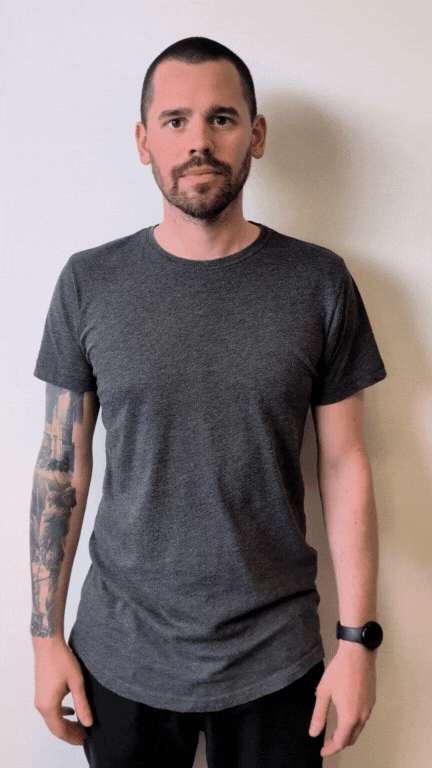
(A micro-shrug when saying something affirmative, may indicate gestural leakage)
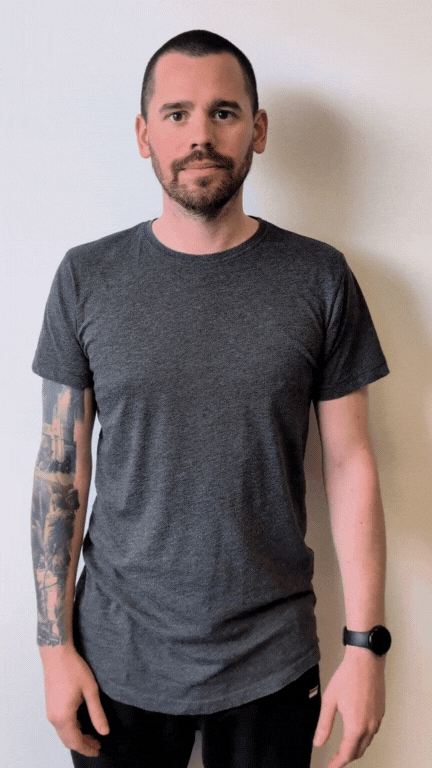
(Overally exaggerated gestures can sometimes be used to convice, and not simply convey)
The hypothesis here is that when people lie, they need to process the truth in their minds, suppress it, and then fabricate a lie. This takes time, and often, the hardwiring of the first thought process and the associated gesture has already been shown. Oops!
More research is needed in this area, though the hypothesis is already supported by ‘Growth Point Theory’ (McNeill, 1992, 2005, 2013; McNeill and Duncan, 2000) and related neuroscience studies on non-declarative memory (Eichenbaum & Cohen, 2004; Reber, Knowlton, & Squire, 1996).
In Conclusion
As we’ve explored here, gestures are more than just hand movements; they are a profound language of their own, deeply embedded in our communication and cognitive processes. From the subtle signals given by infants to the expressive actions of those who have never seen a gesture, our body language opens a window into our minds that words alone might not reveal.
If you’re fascinated by how much can be communicated beyond words and want to deepen your understanding of both verbal and non-verbal behavior, consider enrolling in our course on behavior analysis. This course offers practical knowledge and skills to enhance your acuity for reading a wide range of communicative behaviors. It covers all six elements of the SCAnS Model, ensuring a comprehensive understanding of body language, facial expressions, voice, verbal style, verbal content, and psychophysiology.
Whether you are a professional looking to refine your observational skills or simply curious about the nuances of human interaction, this course will equip you with the tools to interpret and understand the complex dynamics of communication more effectively.
Ready to dive deeper and transform your ability to read the unspoken? Join our Behavior Analysis course today and start unlocking the secrets of effective communication!

